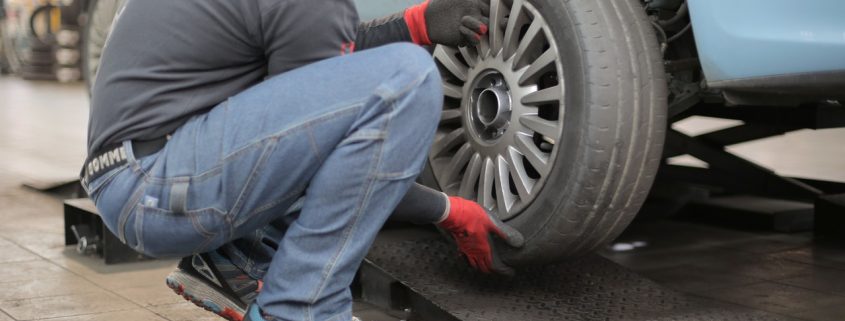When Do I Need New Tires? How to Tell if It’s Time for Tire Replacement
 How do you know when it’s time for new tires? It can be tough to tell, especially if you’re not sure what to look for. Your car’s tires are its first line of defense against the elements and anything else the road might throw your way. They take a beating over time, and eventually they’ll need to be replaced. But how can you tell when it’s time? In this blog post, we’ll walk you through some of the signs that it may be time for new tires. Keep reading to learn more!
How do you know when it’s time for new tires? It can be tough to tell, especially if you’re not sure what to look for. Your car’s tires are its first line of defense against the elements and anything else the road might throw your way. They take a beating over time, and eventually they’ll need to be replaced. But how can you tell when it’s time? In this blog post, we’ll walk you through some of the signs that it may be time for new tires. Keep reading to learn more!
Tire tread
Tire tread is one of the most important factors to consider when it comes to deciding whether or not you need new tires. If your tread depth has decreased below the legal limit, it’s time for new tires. You can measure your tire tread depth with a penny: place the coin upside down into the grooves of your tire’s tread. If you can’t see the top of Lincoln’s head, your tires still have some life left in them. But if you can see all of him, it’s time for new rubber on your ride.
Uneven wear
Another sign that it may be time for new tires is when they start to wear unevenly. This usually happens when there’s something wrong with your suspension or alignment, and it’ll cause one side of your tire to wear down more quickly than the other. If this starts happening, take your car in for a check-up and get those issues sorted out before they turn into bigger problems down the road.
Weather conditions
If you live in an area with a lot of extreme weather conditions, chances are you’ll need to replace your tires more often than someone who lives in a milder climate. Road salt, snow, and ice can take a serious toll on your tires, so if you drive in those conditions frequently it’s a good idea to keep an eye on their tread depth and overall condition.
Older cars
If your car is older, you may need to replace your tires more often than someone who has a newer vehicle. That’s because the rubber on older tires tends to degrade over time, leading to decreased traction and handling. It’s a good idea to check the age of your tires every few months – just look for the DOT code on the sidewall (it’ll be something like “XXYYWW”). The first two numbers indicate the week of manufacture, while the last two numbers indicate the year. So, for example, if you see “4916” on your tires, that means they were made in the 16th week of 2016.
After an accident
If you’ve been involved in an accident, it’s a good idea to replace your tires even if there doesn’t seem to be any damage. That’s because accidents can often cause unseen damage to your tires, which can lead to blowouts and other dangerous situations down the road.
Poor handling
Lastly, if you feel like your car isn’t handling as well as it used to or is making strange noises when you drive, take it in for a check-up. Those could be signs that something is wrong with your tires and they need replacing.
So, how do you know when it’s time for new tires? As you can see, there are a few key signs to look out for. If your tread depth is low, if your tires are wearing unevenly, or if you live in an area with extreme weather conditions, it may be time for some new rubber. And if you’ve been in an accident or your car is handling poorly, don’t wait – take it in for a check-up and replace those tired old tires!



